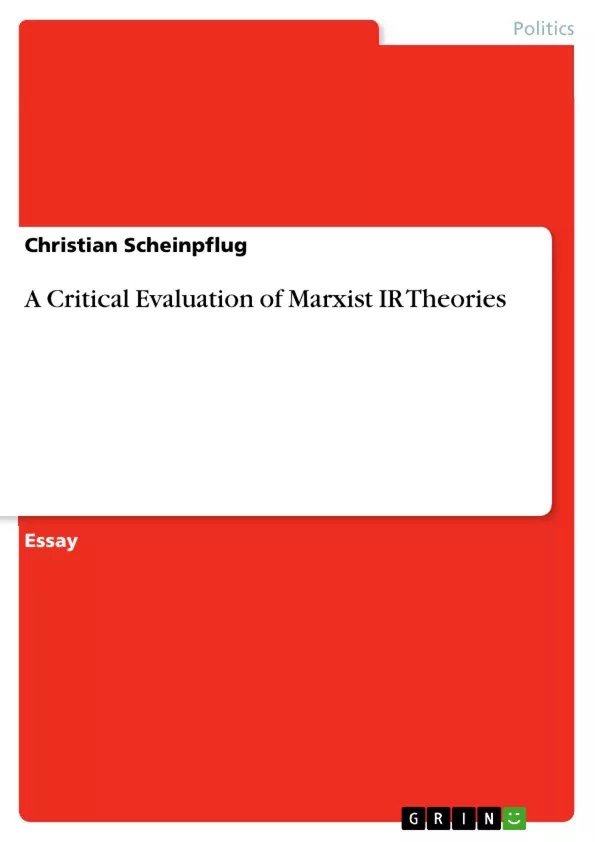Marxist International Relations (IR) theory is fundamental to the discipline. Its distinct approaches are neither strictly positivist, nor post-positivist but derive insights from both methodologies. Common elements in the Marxist tradition are imperialism, exploitation, capital accumulation and expansion, as well as hegemony. Materialist approaches, i.e. those which privilege how natural resource endowment, geography, military capability, or technology influence the structure of international relations (Baylis et al. 2008:583) are prevalent.
Table of Contents
- Foundations of Marxist IR theories
- Marxist IR theories
- Lenin-rigid structure
- Kautsky-rigid structure and co-operation
- Wallerstein - world-systems theory
Objectives and Key Themes
This essay aims to provide a critical evaluation of how Marxist IR theorists employ the concept of 'structure' within the context of the global capitalist economy to explain developments in international relations. The essay examines four prominent Marxist approaches: Lenin's finance imperialism, Kautsky's ultra-imperialism, Wallerstein's world-system theory, and Coxian neo-Gramscianism. Key themes explored in the essay include:- The role of 'structure' in shaping international relations
- The interplay of materialist and idealist factors in international politics
- The dynamics of imperialism, exploitation, and capital accumulation in the global capitalist economy
- The evolution and cyclical nature of world-systems
- The concept of hegemony and its impact on the global political and economic order
Chapter Summaries
The first section of the essay delves into the foundations of Marxist IR theory, drawing upon the works of Karl Marx and Friedrich Engels, particularly their seminal works "Das Kommunistische Manifest" and "Das Kapital." The authors argue that the falling rate of profit, driven by increased productivity and technological advancements, compels capitalists to seek expansion and exploit labor, leading to the emergence of a global capitalist economy. The second section introduces the core Marxist theories of Lenin, Kautsky, Wallerstein, and Cox. Lenin's finance imperialism posits a rigid international structure characterized by inter-imperialist rivalry and conflict. Kautsky, while acknowledging the rigid structure, emphasizes the potential for cooperation among dominant capitalist states through ultra-imperialism. Wallerstein's world-systems theory proposes a cyclical and hierarchical structure of core, semi-periphery, and periphery, with core states dominating the global capitalist economy. Coxian neo-Gramscianism highlights the interplay of material and ideational forces, emphasizing the role of hegemony and the influence of ideas in shaping the global political order.Keywords
The key concepts and themes explored in this essay include: Marxist IR theory, structure, global capitalist economy, imperialism, finance imperialism, ultra-imperialism, world-system theory, hegemony, neo-Gramscianism, materialist, idealist, exploitation, capital accumulation, and international relations.
Ende der Leseprobe aus 19 Seiten
- nach oben
- Arbeit zitieren
- Christian Scheinpflug (Autor:in), 2014, A Critical Evaluation of Marxist IR Theories, München, GRIN Verlag, https://www.grin.com/document/277996
Blick ins Buch



